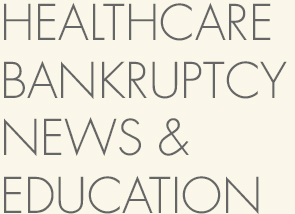Understanding the Legal Process
We have compiled an extensive list of commonly used terms in personal bankruptcy. Some of the terms are very basic and more common, whereas others warrant a more detailed explanation. Underlined terms offer more details by clicking on them.
Assets – Anything that can be owned and has value. An asset can be exchanged for money. One’s assets can be sold during the process of personal bankruptcy.
Bankruptcy – The term that refers to the state of someone who cannot pay back their debts to their creditors. The state of bankruptcy can be declared by debtors themselves, or can be established by a court. The latter is sometimes referred to as involuntary bankruptcy.
Bankruptcy Code – A reference to the system of laws that contain rules about bankruptcy and the protection that is offered to someone who has declared bankruptcy. In United States law, this is commonly referred to as Title 11.
Bankruptcy Discharge – When a debtor is released from having to pay any of his previously outstanding debts.
Bankruptcy Exemption – This refers to properties that a debtor may keep while dealing with the process of personal bankruptcy.
Bankruptcy Petition – The form or application that a debtor files when they want to declare personal bankruptcy.
Bankruptcy Protection – The ability to cancel or restructure debt to creditors. This usually involves the selling of one’s assets.
Borrower – See Debtor.
Chapter 7 – The type of bankruptcy protection that involves the debtor selling some or all of their assets to repay debt.
Chapter 11 – The type of bankruptcy protection that allows for the bankrupt entity to reorganize its debt. This process usually happens while a business is still in operation.
Chapter 13 – The type of bankruptcy protection an individual files in which the individual is given the opportunity to reorganize their debt.
Claim – Otherwise referred to as a debt. This term is used in the context of a creditor who has a claim on the debtor’s money.
Contingent Claim – The amount of the claim cannot be currently computed due certain circumstances that may happen. The claim is contingent on the results.
Credit History – A record of how responsibly and punctually debtors repaid their debt to their creditors.
Creditor – Someone who is owed money. This is sometimes referred to as a Lender.
Debt – Money that a is owed to creditor.
Debt Restructuring – The process that someone goes through to renegotiate their outstanding debt. This is implemented to improve one’s current financial situation.
Debtor – Someone who owes money to a creditor. This is sometimes referred to as a borrower.
Declaring Bankruptcy – This is the process of a debtor making legal claims to court that they are in a state of personal bankruptcy. A debtor will usually declare bankruptcy to get relief from all or part of their debt.
Default of Loan – This is the term used when a debtor does not comply with the agreement set out between them and their creditors. Usually, a loan is considered defaulted if it has reached 30 days after the appointed repayment date.
Deficiency Balance – The difference in amount between one’s assets that are sold to pay back debt, and what is still owed to one’s creditors.
Exempt Property – Property that is exempt from being sold during the proceedings of personal bankruptcy.
Lender – See Creditor.
Liquidation – The process of selling one’s assets so as procure cash to pay off debt.
Nonexempt Property – Property that cannot be exempted during the process of personal bankruptcy.
Outstanding Debt – This is the part of one’s debt that has still not been paid. This includes both the principal and interest of the debt.
Reorganization – This is the process of restructuring one’s debts during the period of personal bankruptcy.
Secured Debt – This is a debt in which the creditor is guaranteed assets that are equal to or greater in value than the amount that was lent. This sometimes referred to as a secured loan.
Trustee – A third party that is entrusted to control the debtor’s assets during the process of personal bankruptcy.
Unsecured Debt – This is a debt that is not guaranteed by the debtor to the creditor with any of the debtor’s assets in case there is a default on the loan. The debt is usually granted based on the creditors trust and credit history of the debtor.



